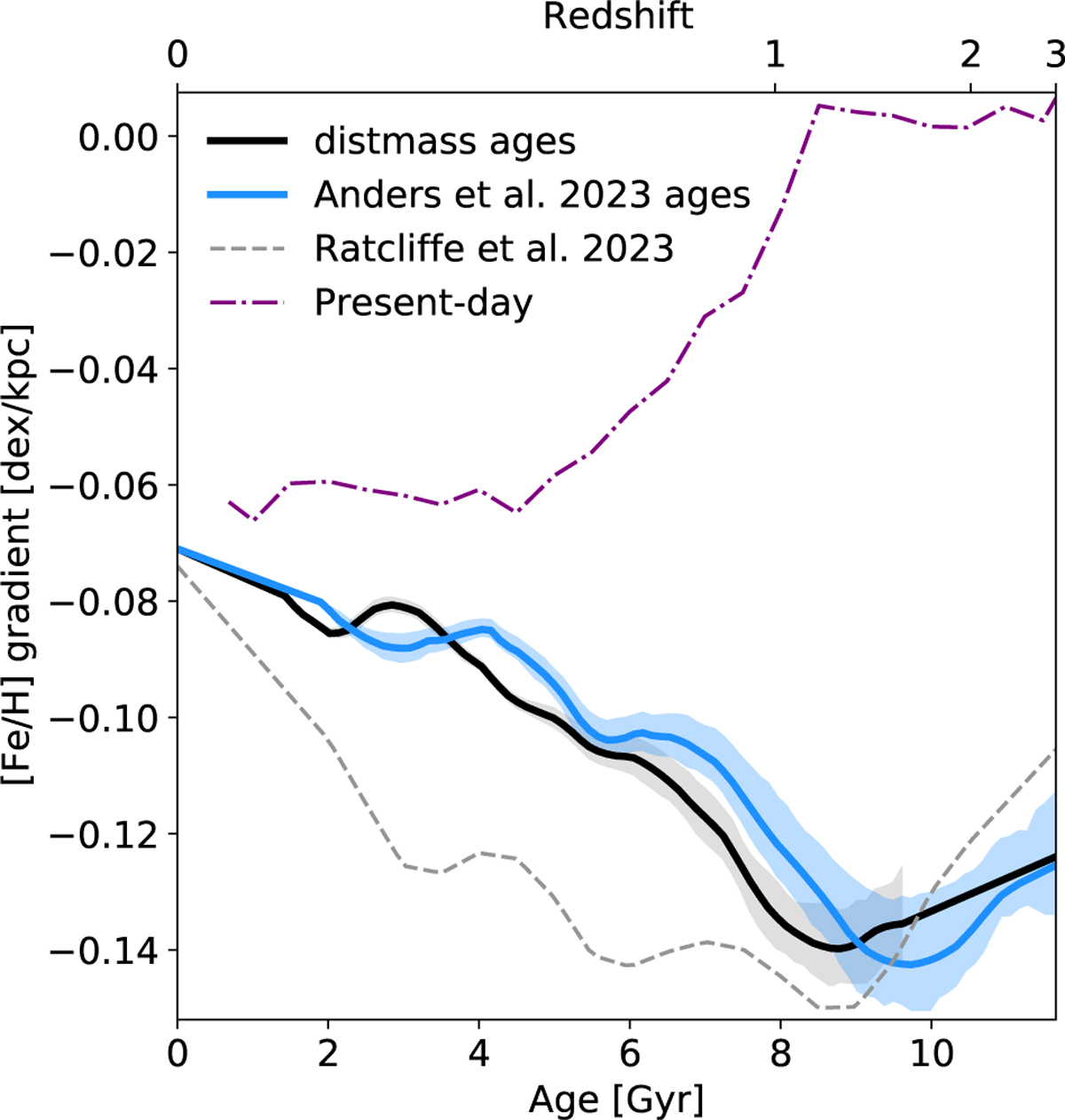Fig. 5

Download original image
Comparing the recovered MW disk metallicity gradients with and without correcting for the growth of the star-forming region. The dashed gray line represents the gradient found in Ratcliffe et al. (2023) using ages from Anders et al. (2023), while ∇[Fe/H](τ) recovered using the correction proposed in this paper is shown in blue (ages from Anders et al. 2023) and gray (ages from distmass). The gradient is taken as the mean of 100 Monte Carlo samples where (age, [Fe/H]) are redrawn from a normal distribution and then denoised, and the shaded areas represent the 25–75 percentiles. The range in [Fe/H] is measured in age bin widths of 1 Gyr, taken every 0.2 Gyr. The corrected gradient recovered using the two different age catalogs is strikingly consistent and illustrates that the fluctuations in the gradient are not artifacts of the age catalog. The steepening events in the gradient ~8, ~6, and ~3 Gyr ago are less significant after the correction is applied; however, there is still non-monotonicity in the gradient’s evolution. We also provide the present day gradient (dashed purple line measured using Rguide) to illustrate the information lost due to radial migration.
Current usage metrics show cumulative count of Article Views (full-text article views including HTML views, PDF and ePub downloads, according to the available data) and Abstracts Views on Vision4Press platform.
Data correspond to usage on the plateform after 2015. The current usage metrics is available 48-96 hours after online publication and is updated daily on week days.
Initial download of the metrics may take a while.


